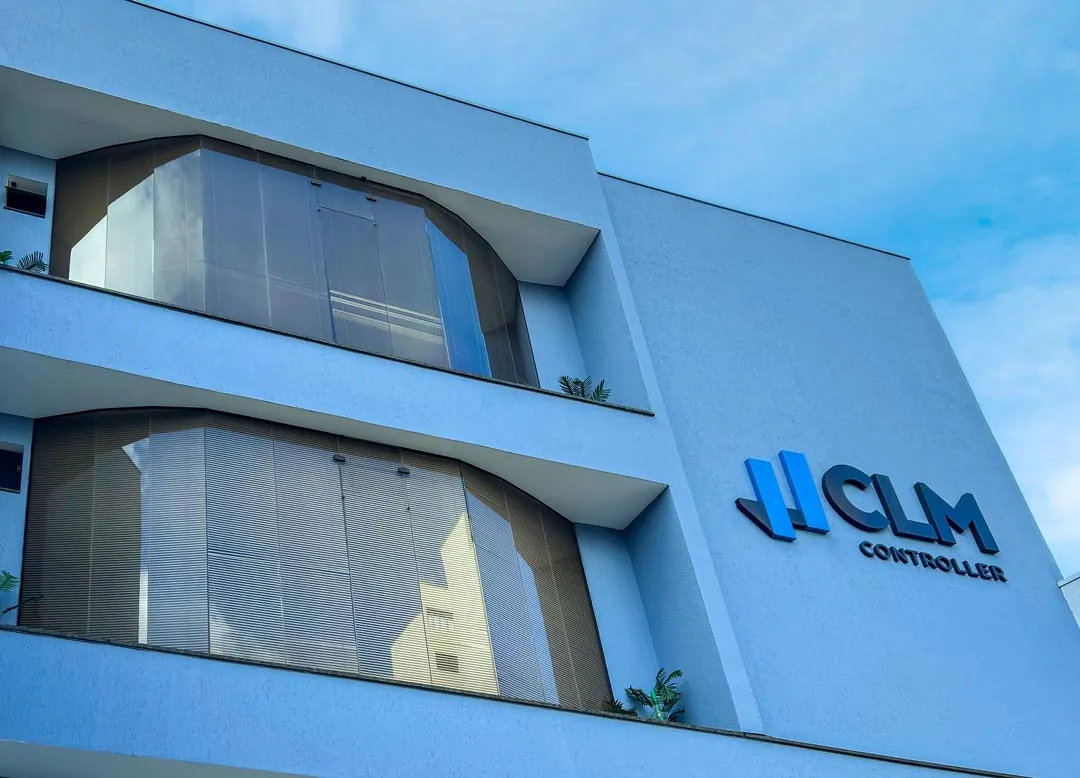Thinking of switching to Presumed Profit? Find out in this article if this option is the most advantageous for your business!
We'll show you when it's worth it, how the calculations work and which companies benefit most from this tax regime. Let's understand this in a simple and strategic way?
What is Presumed Profit?
O Presumed Profit is a simplified tax regime for calculating Corporate Income Tax (IRPJ) and Social Contribution on Net Profit (CSLL). Under this regime, the company does not calculate these taxes based on the actual net profit obtained, but rather on a profit margin pre-set by law according to its economic activity. In other words, it is presumed that the company made a certain percentage of profit on its turnover, and it is on this presumed profit that the IRPJ and CSLL rates will be applied. There is no need to calculate actual accounting profit for the purposes of these taxesexcept in specific situations such as capital gains or financial income, which are taxed separately.
It is important to note that the option for Presumed Profit only affects the way specific federal taxes are calculated. The taxes impacted by the regime are precisely IRPJ, CSLL, PIS and COFINS. Taxes such as ICMS (state), ISS (municipal), IPI, social security contributions, etc. are not altered by the choice of Presumed Profit - they continue to be calculated normally according to the rules for each one. Thus, when evaluating when opting for Presumed ProfitIn addition, business owners should focus on the impacts on IRPJ, CSLL, PIS and COFINS, which are the taxes calculated differently under this regime.
Who can opt for this system?
Companies of different sizes and sectors can opt for Presumed Profitprovided they meet certain criteria. In general, this regime is aimed at small and medium-sized companies that invoice above the Simples Nacional limit (currently R$ 4.8 million per year) and up to the ceiling of R$ 78 million gross annual revenue. According to the Federal Revenue Service (IN RFB 1.700/2017), only legal entities whose total revenue in the previous calendar year was equal to or less than R$ 78,000,000.00They are not obliged to use the Real Profit system for other reasons. If the company exceeds this turnover limit, it is obliged to tax by Real Profit the following year.
In addition to the billing criterion, it is necessary to observe the company activity. Practically all economic activities can adopt Presumed Profit, except for those required by law to use the Real Profit method. For example, financial institutions, companies similar to banks, factoring and some companies with specific tax benefits. are obliged to use Real Profit and cannot opt for Presumed Profit. Apart from these exceptions, companies in commerce, industry, services and other segments are eligible for Presumed Profit, as long as they fall within the mentioned turnover limit.
It should be noted that the choice of tax regime is annual. The company makes the option at the beginning of each year (usually when paying the first IRPJ form of the calendar year) and this option is irreversible for the whole year. Therefore, before opting, it is essential to analyze whether Presumed Profit will be advantageous compared to the other available regimes (Simples Nacional or Lucro Real). Companies that can be in Simples Nacional (annual revenue up to R$ 4.8 million) often remain in Simples because it is more simplified; however, some opt for Lucro Presumido if they identify financial advantages in doing so or if they cannot use Simples due to restrictions in Simples itself (such as type of activity not allowed in Simples, corporate participation by a legal entity, etc.). To summarize, companies with a turnover of up to R$ 78 million/year that are not obliged to use Lucro Real can choose Lucro Presumido.The decision must take into account a careful analysis of the company's situation.

How does Presumed Profit taxation work?
In Presumed Profit, federal taxes are calculated differently from Real Profit. To explain it clearly: the legislation defines a percentage of presumed profit applicable to the company's gross revenue. This percentage varies according to the branch of activity (for example, 8% for commerce and 32% for services in general) and determines the calculation basis on which the IRPJ and CSLL rates will be levied.
Below, we detail the main Presumed Profit taxes, their rates and how they are calculated:
Calculation basis (Presumed Profit) - Percentages per activity
The first step is to calculate the presumed profitThis is the portion of turnover considered to be profit according to the activity carried out. These percentages of presumed profit are set by the Internal Revenue Service and generally vary from 1.6% to 32% of gross revenue. Some of the main percentages currently in force include:
-
8% - Applicable to trade (sale of goods), industry, cargo transportation, real estate activities, hospital services, rural activities, among other activities not specified by law (other than the provision of services). (Example: A commercial company is assumed to make 8% profit from its turnover).
-
32% - Applicable to most service providers in general (professional services, consultancy, business intermediation, leasing of goods, etc.), when there is no specific lower percentage defined by law. (Example: A consulting services company is assumed to earn 32% from its turnover).
-
16% - Used in specific cases, such as passenger transportation services (except cargo) and some small service activities (annual gross revenue up to R$ 120,000).
-
1.6% - Special percentage applied, for example, to the resale of fuel and natural gas (a segment with a very low presumed margin).
These percentages are applied to the gross revenue for the calculation period to determine the value of presumed profit (calculation basis). It is worth noting that the IRPJ and CSLL calculation period for Presumed Profit is quarterly (January-March, April-June, etc.), i.e. each quarter the presumed profit is calculated based on the revenues for that quarter. For PIS and COFINS, the calculation is monthly. The company must segregate its revenues by activity if there is more than one, as each type of revenue may have a different presumption percentage according to the legislation.
Note: The percentages above refer to the IRPJ calculation basis. In the case of CSLLHowever, the law establishes slightly different presumption percentages for some activities. For example, in commercial and industrial activities, the following is used 12% of presumption for CSLL, while for services in general 32% is used (in other words, many activities that have 8% of IRPJ base have 12% for CSLL). This difference is due to the CSLL legislation, but in practice the calculation is analogous: the percentage corresponding to gross revenue is applied to find the CSLL base.
IRPJ (Corporate Income Tax)
Once the presumed profit of the quarter, the IRPJ is calculated. The IRPJ rate for Presumed Profit (as well as Real Profit) is 15% on profit calculated. Therefore, we multiply the value of the presumed profit by the percentage of 15%.
Additional IRPJ: There is also a surcharge for high profits: if the presumed profit exceeds R$ 60,000.00 in a quarter (equivalent to R$ 20,000.00 per month), there is a surcharge. additional 10% of IRPJ on the portion that exceeds this limit. In other words, the IRPJ is made up of 15% on the total presumed profit, plus 10% on the part of the presumed profit that exceeds R$ 20,000 per month. This additional tax has a practical effect only for companies with higher turnover and margins, as for smaller businesses the quarterly presumed profit often falls below the ceiling of R$ 60 thousand. The calculation of IRPJ under Presumed Profit is made by quarterlyPayment (via DARF) is usually made by the last working day of the month following the end of the quarter.
Example: Suppose a commercial company with a turnover of R$ 100,000.00 in the quarter in question and a presumed margin of 8%. The presumed profit will be R$ 8,000.00; the IRPJ will be 15% of that amount, i.e., R$ 1,200.00 IRPJ due in the quarter. In this case there is no surcharge, because the presumed profit (R$ 8 thousand) is well below R$ 60 thousand for the quarter.
CSLL (Social Contribution on Net Profit)
The CSLL, a contribution levied on profit, is calculated in a similar way to the IRPJ: a rate of 9% on presumed profit found for the period. There is no additional CSLL - 9% is always applied to the entire base. As mentioned, in commercial/industrial activities the CSLL base is usually 12% of revenue, and in services 32%. Keeping the previous example (commercial company with R$ 100,000.00 in the quarter and an assumed base of 12% for CSLL), the presumed profit for CSLL would be R$ 12,000.00 and the CSLL due would be R$ 1,080.00 (9% of 12,000). CSLL is also calculated quarterly together with IRPJ.
PIS and COFINS (cumulative regime)
Under the Presumed Profit regime, contributions from PIS (Social Integration Program) and COFINS (Contribution to the Financing of Social Security) are calculated according to the cumulative regime. This means that there is no calculation of credits on inputs or purchases - A tax rate is applied directly to gross sales, in a "cumulative" manner. The rates are much lower than for Real Profit (non-cumulative): currently, PIS = 0.65% e COFINS = 3.0% on gross revenue. These rates apply to monthly on the turnover for each month (not the quarter).
In practical terms, every month the company calculates 0.65% of its revenue and collects it as PIS, and 3% of its revenue as COFINS. For example, a company with a turnover of R$ 100,000.00 for the month would have PIS from R$ 650.00 e COFINS from R$ 3,000.00 for that month. These percentages are fixed and do not depend on presumed profit, because PIS/COFINS in Presumed Profit does not use the presumed margin - it is levied directly on turnover (hence it is said that it is cumulative). Unlike the non-cumulative regime (Real Profit), here the company you can't deduct credits of PIS/COFINS on purchases, even if you have many taxed inputs.
Note: Presumed Profit companies are still subject to the state and municipal taxes normallyno change. If the company provides servicesfor example, will have to pay the ISS (Service Tax) to the municipality, usually at a rate of between 2% and 5% depending on the city and the type of service. Likewise, commercial or industrial companies will pay ICMS to the state on the sale of products, according to ICMS rules. These taxes (ISS, ICMS) are calculated and paid regardless of whether the company is on Presumed Profit - the regime does not unify these taxes, it only simplifies the federal ones mentioned. Unlike Simples Nacional, where these taxes are included in the unified form, in Lucro Presumido the company deals with each tax separately.
Practical example: Presumed Profit Commercial Company
To illustrate, suppose a company commercial (purchase and resale of goods) with turnover monthly R$ 90,000.00. In one quarter, its turnover totals R$ 270,000.00. We're going to calculate the federal taxes due for that quarter under the Presumed Profit system:
| Statement (Trade) | Value |
|---|---|
| Gross revenue for the quarter | 270.000,00 |
| Percentage of presumed profit (IRPJ) - 8% | 21.600,00 |
| IRPJ calculation basis | 21.600,00 |
| IRPJ (15% over R$ 21,600) | 3.240,00 |
| Additional IRPJ (10% on surplus above R$ 60 thousand) | 0.00 (not applicable) |
| Total IRPJ for the quarter | 3.240,00 |
| Percentage of presumed profit (CSLL) - 12% | 32.400,00 |
| CSLL calculation basis | 32.400,00 |
| CSLL (9% over R$ 32,400) | 2.916,00 |
| PIS (0.65% on R$ 270,000) | 1.755,00 |
| COFINS (3% over R$ 270,000) | 8.100,00 |
| Total federal taxes (quarter) | 16.011,00 |
Explanation: In the quarter in question, the company had R$ 270,000 in sales. Being a trading company, it is assumed 8% profit for IRPJ, which gives a base of R$ 21,600.00. Applying 15% of IRPJ, you get R$ 3.240,00. There is no additional IRPJ in this case because the base (R$ 21.6 thousand) was below R$ 60 thousand in the quarter. For CSLLThe base is 12% (R$ 32,400.00) and the tax rate is 9%, resulting in R$ 2,916.00 of CSLL. The PIS e COFINS were calculated on the (cumulative) turnover for the entire quarter just to show the total - in practice, the company would pay R$ 585.00 in PIS and R$ 2,700.00 in COFINS each month, making a total of R$ 1,755.00 and R$ 8,100.00 at the end of the quarter. Adding up IRPJ, CSLL, PIS and COFINS, the federal tax burden was R$ 16,011.00 in the quarterwhich is approximately 5.93% of gross sales. Remember that in addition to these federal taxes, the commercial company also pays ICMS on your sales according to state legislation (in the example above, we haven't included ICMS, which will depend on the internal rate of goods, usually around 18%).
Practical example: Presumed Profit Services Company
Now suppose a company service provider (e.g. consultancy) with a turnover monthly R$ 100,000.00. In the quarter, the total R$ 300.000,00 in revenue. Let's calculate taxes in this scenario, remembering that services in general have a much higher presumption of profit (32%):
| Statement (Services) | Value |
|---|---|
| Gross revenue for the quarter | 300.000,00 |
| Percentage of presumed profit (IRPJ) - 32% | 96.000,00 |
| IRPJ calculation basis | 96.000,00 |
| IRPJ (15% over R$ 96,000) | 14.400,00 |
| Additional IRPJ (10% on surplus of R$ 36,000 (96.000 - 60.000)) | 3.600,00 |
| Total IRPJ for the quarter | 18.000,00 |
| Percentage of presumed profit (CSLL) - 32% | 96.000,00 |
| CSLL calculation basis | 96.000,00 |
| CSLL (9% over R$ 96,000) | 8.640,00 |
| PIS (0.65% on R$ 300,000) | 1.950,00 |
| COFINS (3% over R$ 300,000) | 9.000,00 |
| Total federal taxes (quarter) | 37.590,00 |
Advantages and disadvantages of Presumed Profit
Like any tax regime, Presumed Profit has positive and negative points. The decision to opt for it must consider these aspects in the light of the company's reality. We list the main ones below advantages e disadvantages of this regime to help identify when it can be more advantageous or not for the entrepreneur:
Advantages of Presumed Profit:
-
Administrative and accounting simplicity: Presumed Profit has fewer bookkeeping requirements compared to Real Profit. It is not necessary to calculate the real profit or keep such a detailed control of additions/exclusions for IRPJ and CSLL purposes, which reduces bureaucracy and costs with accounting. The calculation of taxes is simpler and predictableThe calculation basis is fixed, making it easier for the company to plan its finances.
-
Potentially lower tax burden for companies with high profitability: If the company's actual profit margin is higher than the margin presumed by lawThe Presumed Profit system is advantageous because taxation is levied only on that reduced base. For example, even if the company earns 20% on sales, if it is taxed under Presumed Profit as a business, it will pay IRPJ/CSLL on only 8% of sales. In practice, this means a much lower effective rate of IRPJ/CSLL than would be the case with full real profit. In short, companies with high and stable profits tend to have a proportionally lower tax burden under this regime than they would under Real Profit (where they would pay 15% + 10% on all real profit) or even under Simples, depending on the case.
-
Lower PIS and COFINS rates: In Presumed Profit, the PIS/COFINS rates (0.65% and 3%) are significantly lower than those in the non-cumulative regime (1.65% and 7.6% in Real Profit). For companies that don't have many inputs or credit-generating expenses, this lower charge can represent savings. In other words, businesses with low volume of taxed purchases can benefit from cumulative PIS/COFINS, because the advantage of credits in Lucro Real would be minimal while the rates there are much higher.
-
Wide range of applications and optional: Lucro Presumido covers a wide range of sales (up to R$ 78 million per year) and practically all sectors that are not subject to Lucro Real. It can even be adopted by companies that could be in Simples Nacional but, for some reason, opt for Presumido to take advantage of a specific benefit (such as a reduction in the tax burden in certain cases or business requirements). There are no restrictions on the legal form (LTDA, EIRELI, S/A closed can use it). This flexibility makes Presumed Profit a very common regime - around half of Brazilian companies opt for itThis is due to the simplified and less bureaucratic process compared to Lucro Real.
Disadvantages of Presumed Profit:
-
Unfavorable taxation for companies with low margins or losses: The main risk of Presumed Profit is the inflexibility of the calculation basis. If the company's actual profit margin is lower than the presumed one (or if the company makes a loss in a period), taxes will still be calculated on the minimum presumed profit. This can lead to relatively high for companies with tight margins - they may end up paying IRPJ/CSLL even when, under real profit, they might not pay anything (in the case of tax losses, for example, under Real Profit there would be no IRPJ/CSLL to pay, but under Presumed there will be, calculated on the presumption). In short, businesses with low profits or unstable results tend to lose out under Presumed Profit, as they are unable to reduce taxes in low-performance scenarios.
-
Credits and losses cannot be written off: Unlike Real Profit, Presumed Profit does not allow tax losses from previous periods to be offset or use tax credits to offset the amount owed. For example, a Presumed company cannot use PIS/COFINS credits on inputs, since it is in the cumulative regime. Nor can it offset any losses from one quarter with profits from subsequent quarters for IRPJ/CSLL purposes - each quarter is calculated separately. This means that companies with high cost of inputs or goods and who would benefit from credits under the non-cumulative regime may end up paying more PIS/COFINS under the Presumed regime than they would under the Real Profit regime. This lack of credits makes the less interesting for businesses with a large volume of taxed purchasesbecause the 0.65%/3% is levied on all revenue, with no relief. Similarly, companies that made a loss in the previous year are unable to use that loss to write off their taxable profit as they would under Real Profit.
-
It can be less advantageous than Simples Nacional in some cases: For smaller companies that can opt for Simples Nacional, you need to compare the tax burdens. Lucro Presumido involves calculating and paying various taxes separately (IRPJ, CSLL, PIS, COFINS, as well as ISS/IPI/ICMS where applicable), while the Simples unifies taxes and often offers lower effective tax ratesespecially for lower turnover. If the company is eligible for Simples and, when doing the math, finds that Simples would result in less tax to pay, Presumed Profit is no longer interesting. In general, while Simples is suitable for companies up to R$ 4.8 million/year, it tends to be advantageous due to its simplicity and possible savings up to a certain turnover point. Companies close to or above this limit, however, no longer have this option and the Presumed is now considered.
-
Responsibility for quarterly monitoring and risk of non-compliance: Although simpler than Real Profit, Presumed Profit still requires the company to maintain a proper financial and accounting control to correctly calculate quarterly bases and avoid errors. Errors in determining taxable gross revenue or applying the wrong percentage of presumption are common problems that can lead to assessments. In addition, if the company grows and exceeds R$ 78 million in the yearIn the future, the company will be obliged to switch to Real Profit, which may require significant accounting adaptations. You therefore need to monitor your turnover and be prepared for additional obligations if you have to change regime in the future.
When is Presumed Profit the best choice?
In view of the advantages and disadvantages, when opting for Presumed Profit? In general, this regime will be more advantageous in the following situations:
-
High profit margins and low operating costs: Companies that consistently obtain high profitability (percentage) and do not have very high operating expenses tend to benefit from Presumed Profit. They pay tax on a presumed base that is lower than their actual profit, reducing the effective tax burden. Examples include businesses providing services with high added value (consultancies, advisory services) or with high-margin products/services.
-
Company not obliged or prevented from being in another simpler regime: If the company cannot opt for Simples Nacional (either because it exceeds the turnover limit of R$ 4.8 million, or because it carries out an activity prohibited under Simples), Presumed Profit is usually the natural choice for companies that are not obliged to use Real Profit either. In this intermediate range, Presumed Profit is less complex than Real Profit.
-
Search for less complexity instead of fine-grained tax optimization: Businesses that want to simplifying ancillary obligations and accountingFor example, if they pay a little more tax than with Real Profit, they may prefer Presumed Profit. Predictability and ease of calculation weigh in their favor. For example, traders and small industrialists who don't want to deal with the detail required under Lucro Real (permanent stock control for tax purposes, calculation of PIS/COFINS credits, Lalur bookkeeping, etc.) usually opt for Presumido.
-
Sectors with a tradition of Presumed Profit: Some sectors and company sizes massively adopt the Presumed Profit because they are well suited to it. Examples of segments that generally benefit of this model include: retail and wholesale trade, small and medium-sized industries, high-margin professional or consultancy services companies, medical and dental clinics, IT and software development companies (when not in Simples), among others. In these sectors, the presumed margin is generally in line with or below the typical real margin, and the cumulative PIS/COFINS regime does not penalize excessively.
On the other hand, Presumed Profit may not be the best choice when the company operates with very tight margins, has a high cost structure or credit benefits under Lucro Real, or when Simples Nacional offers a lower charge. Each case must be analyzed individually. It is recommended that the entrepreneur, together with their accountant, carry out simulations comparing taxation under Presumed Profit versus Real Profit (or Simples, if applicable) before deciding. The option is valid for the whole year, so it is prudent to opt for the regime that projects the lower tax burden within the law and is compatible with the company's administrative capacity.
Read more about: Difference between Simples Nacional and Presumed Profit
Conclusion
In a nutshell, opt for Presumed Profit usually worthwhile for companies with a turnover of up to R$ 78 million/yearfrom different sectors, who present profit margin equal to or greater than the presumed and look for simple tax calculation. In these cases, the regime can bring savings and ease in complying with tax obligations. However, it is essential to evaluate the risks and counter scenariosIf the profit margin is lower than the presumed one, or if the company can fit into a more beneficial regime (such as Simples, for smaller companies), Presumed Profit may not be the best option.
In CLM Controller AccountingThe choice of tax regime is treated as an essential part of the process. tax planning strategic. The company offers specialized support to carry out periodic simulations, taking into account changes in legislation and company revenues.
With this continuous analysis, it is possible to identify the ideal time to opt for Presumed Profit - an alternative that can offer tax savings with less operational complexity. With CLM's support, the entrepreneur is guaranteed assertive decisions, maintaining the financial health of the business and full compliance with legal obligations.








